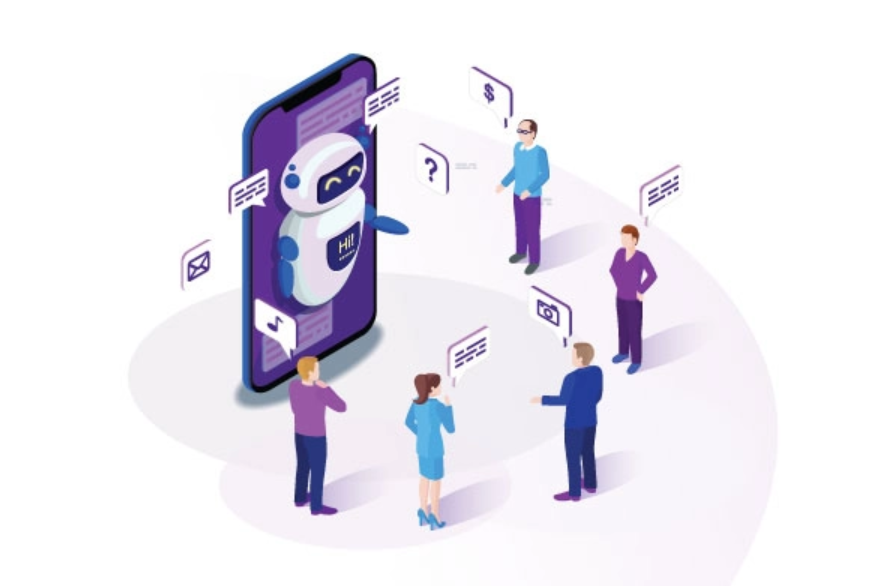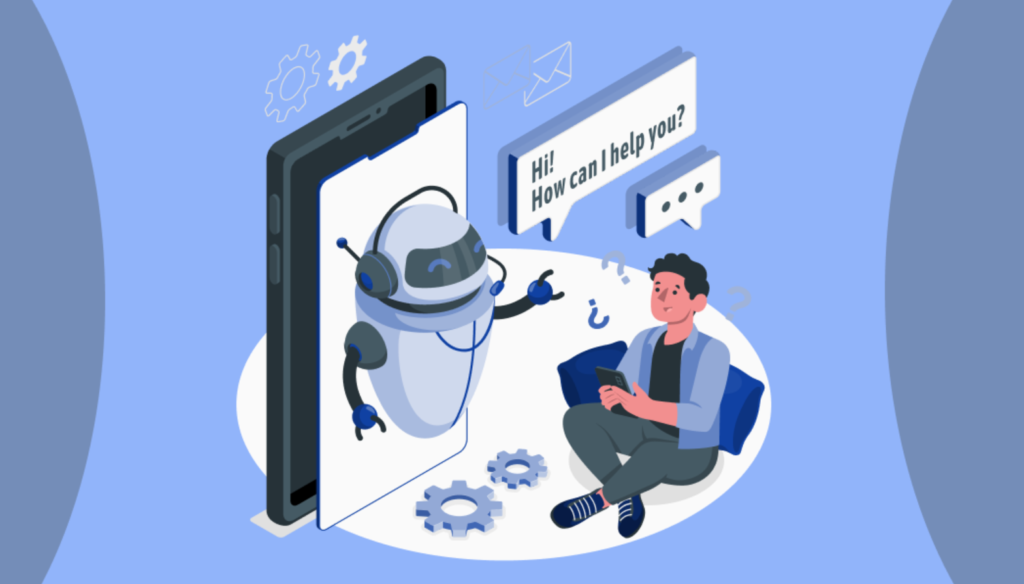In the ever-evolving terrain of the contemporary digital marketplace, where consumer expectations are dynamic and the competitive landscape is ever-shifting, businesses find themselves perpetually on the quest for innovative solutions that not only meet but exceed customer service expectations while concurrently optimising marketing endeavours. At the forefront of this technological evolution stands the chatbot, a revolutionary tool that has emerged as a game-changer in the realm of customer service and marketing. This digital assistant, fueled by artificial intelligence (AI) and powered by advanced algorithms, has become an indispensable asset for businesses aiming to navigate the intricate maze of customer interactions with precision and efficacy.
Consumers now demand instantaneous responses, personalised interactions, and round-the-clock availability. This paradigm shift has not only elevated customer expectations but has also compelled businesses to rethink traditional approaches to service and engagement. In response to this, the chatbot has emerged as a strategic ally, offering a dynamic and efficient means to provide real-time support, deliver personalised experiences, and engage with customers on their terms.
What began as a tool for automating basic queries has now evolved into a multifaceted solution capable of understanding context, responding with nuance, and even exhibiting a semblance of emotional intelligence.
How do chatbots work?
Chatbots operate through a sophisticated interplay of various technologies, combining natural language processing (NLP), machine learning (ML), and rule-based systems to facilitate meaningful interactions with users. The process unfolds in several stages, each contributing to the chatbot’s ability to understand user inputs and generate appropriate responses.
The journey begins with user input, as individuals submit queries or messages to the chatbot. The system then undergoes tokenization, breaking down the input into manageable units known as tokens, which can be words or phrases. This segmented input is subsequently subjected to the power of NLP.
NLP plays a pivotal role in deciphering user intent and recognising entities within the input. Intent recognition involves identifying the primary purpose or goal of the user’s message, while entity recognition involves pinpointing specific pieces of information relevant to the query. For example, in the sentence “Book a flight to New York,” the intent is booking a flight, and the entity is “New York.”
To respond effectively, chatbots often need to access a knowledge base or a database to retrieve information germane to the user’s request. This could involve fetching pre-existing data or interfacing with external systems via APIs to obtain real-time information.
Context management is crucial for maintaining a coherent conversation. Chatbots must keep track of prior interactions and responses to understand the ongoing context. The generated response takes into account the user’s intent, recognised entities, and the prevailing context. This response can be formulated using predefined rules, templates, or machine learning algorithms.
The output, comprising the generated response, is then formatted for presentation to the user. This may involve the inclusion of multimedia elements such as images, buttons, or links, contributing to a more engaging and interactive user experience.
Throughout the interaction, the chatbot may seek user feedback or clarification to handle ambiguous inputs or unclear intents. Some chatbots incorporate learning mechanisms, allowing them to improve over time based on user interactions and feedback. Continuous learning involves updating the model with new data, refining intent recognition, and enhancing overall performance.
In addition to text-based responses, chatbots can integrate with external systems by making API calls to perform actions or retrieve information. This integration expands the capabilities of chatbots, enabling them to execute tasks beyond simple text-based interactions.
In essence, the workings of chatbots are dynamic and adaptive. Ranging from basic rule-based systems to sophisticated models leveraging ML and NLP, chatbots evolve and learn from user interactions, ultimately providing more effective and personalised responses. This multifaceted approach underscores the versatility and power of chatbot technology in enhancing user engagement and facilitating seamless interactions.
The Transformative Power of Chatbots in Marketing

1. Personalisation at Scale
Chatbots redefine personalisation by delivering tailored experiences to a vast audience. Through sophisticated algorithms and machine learning, these conversational agents analyse user behaviour, preferences, and past interactions to craft individualised responses. This personalised touch not only enhances user satisfaction but also builds brand loyalty. Imagine a chatbot that understands a customer’s preferences, recommends products based on their past purchases, and engages in conversations that resonate with their unique interests. This level of personalisation, when applied at scale, allows businesses to connect with their audience on a deeper level, fostering stronger relationships and driving customer retention.
2. Lead Generation Reinvented
The role of chatbots extends beyond mere interactions; they are powerful catalysts for redefining lead-generation strategies. Chatbots streamline the process by engaging website visitors in real-time conversations, understanding their needs, and qualifying leads based on predefined criteria. This dynamic approach to lead generation not only accelerates the sales funnel but also ensures that prospects receive relevant information promptly. By automating the initial stages of lead qualification, businesses can allocate resources more efficiently, focusing human efforts on high-value interactions and strategic decision-making. In essence, chatbots reinvent lead generation by making it more agile, responsive, and tailored to the unique needs of each potential customer.
3. Dynamic Customer Engagement
The dynamic nature of customer engagement undergoes a paradigm shift with the integration of chatbots into marketing strategies. Rather than relying on static content or one-size-fits-all campaigns, businesses can leverage chatbots to engage customers in real-time, adapting to their preferences and behaviours. This dynamic customer engagement is not confined to a single channel; chatbots seamlessly operate across websites, social media platforms, and messaging apps. They serve as proactive assistants, guiding users through the sales journey, addressing queries promptly, and even providing post-purchase support. The result is a more responsive and interactive customer experience, fostering a sense of connection and responsiveness that traditional marketing methods struggle to achieve. In essence, chatbots elevate customer engagement from a passive process to an ongoing, dynamic conversation that aligns with the preferences and needs of individual users.
The Psychology Behind Chatbot Effectiveness
Chatbots’ effectiveness in various contexts can be attributed to a nuanced understanding of human psychology. By delving into the intricacies of user interaction and response, we unravel the psychological underpinnings that make chatbots powerful tools in establishing trust and exhibiting emotional intelligence.
1. Building Trust
The foundation of any successful interaction, whether human or machine-driven, rests on trust. Chatbots excel in building trust through consistent, reliable, and contextually appropriate responses. Users are more likely to engage with a chatbot that exhibits a clear understanding of their queries, providing accurate information and solutions. The psychology of trust is intricately woven into the reliability of the chatbot’s responses, creating a sense of dependability. Moreover, transparency in communication, such as clearly indicating when a user is interacting with a chatbot, fosters an honest and trustworthy environment. As businesses navigate the delicate balance of automation and human touch, the psychology behind trust becomes a crucial element in the successful integration of chatbots into various customer-facing scenarios.
2. Emotional Intelligence
The concept of emotional intelligence takes centre stage when examining the effectiveness of chatbots in user interactions. These virtual assistants are designed to detect and respond to user emotions, adapting their tone and language accordingly. By incorporating sentiment analysis and natural language processing, chatbots can discern whether a user is frustrated, satisfied, or in need of empathy. This emotional intelligence not only enhances the user experience but also contributes to the overall success of the interaction. An emotionally intelligent chatbot can de-escalate tense situations, celebrate successes, and provide a more human-like interaction that resonates with users on an emotional level. As we explore the psychology of emotional intelligence in chatbots, we discover a landscape where technology meets empathy, creating a more nuanced and authentic user experience.
The Future of Chatbots in Marketing

The future of chatbots in marketing holds significant promise, as businesses increasingly recognise the value of using artificial intelligence (AI) and automation to enhance customer interactions.
- Advanced AI and Natural Language Processing (NLP): Chatbots will become more sophisticated with advanced AI algorithms and improved NLP capabilities. This will enable them to better understand and respond to natural language, making conversations with users more seamless and human-like.
- Multichannel Integration: Chatbots will be integrated across multiple channels, including websites, social media, messaging apps, and even voice platforms like smart speakers. This ensures a consistent and convenient user experience across different touchpoints.
- Personalisation: Future chatbots will leverage data analytics and machine learning to deliver highly personalised interactions. By understanding user preferences, behaviours, and past interactions, chatbots can tailor their responses and recommendations to meet individual customer needs.
- E-commerce Integration: Chatbots will play a crucial role in enhancing the e-commerce experience. They can assist users in finding products, provide product recommendations, help with the purchasing process, and even handle post-purchase inquiries, improving overall customer satisfaction.
- Voice-Activated Chatbots: With the rise of voice-activated devices and virtual assistants, chatbots will evolve to support voice interactions. This includes not only understanding spoken language but also providing voice responses, creating a more natural and hands-free user experience.
- AI-driven Predictive Analytics: Chatbots will leverage AI-driven predictive analytics to anticipate customer needs and preferences. By analysing historical data and user behaviour, chatbots can proactively offer relevant information, products, or services before users explicitly request them.
- 24/7 Customer Support: Chatbots will continue to serve as a valuable tool for providing round-the-clock customer support. They can handle routine inquiries, troubleshoot issues, and escalate complex problems to human agents when necessary, ensuring that businesses are always accessible to their customers.
- Integration with Augmented Reality (AR) and Virtual Reality (VR): As AR and VR technologies become more prevalent, chatbots may integrate with these platforms to offer immersive and interactive experiences. For example, a chatbot could guide users through a virtual store or provide product demonstrations in augmented reality.
- Data Privacy and Security: As chatbots handle sensitive customer data, there will be a growing emphasis on ensuring robust data privacy and security measures. Compliance with regulations such as GDPR will be a priority for businesses deploying chatbots in their marketing strategies.


